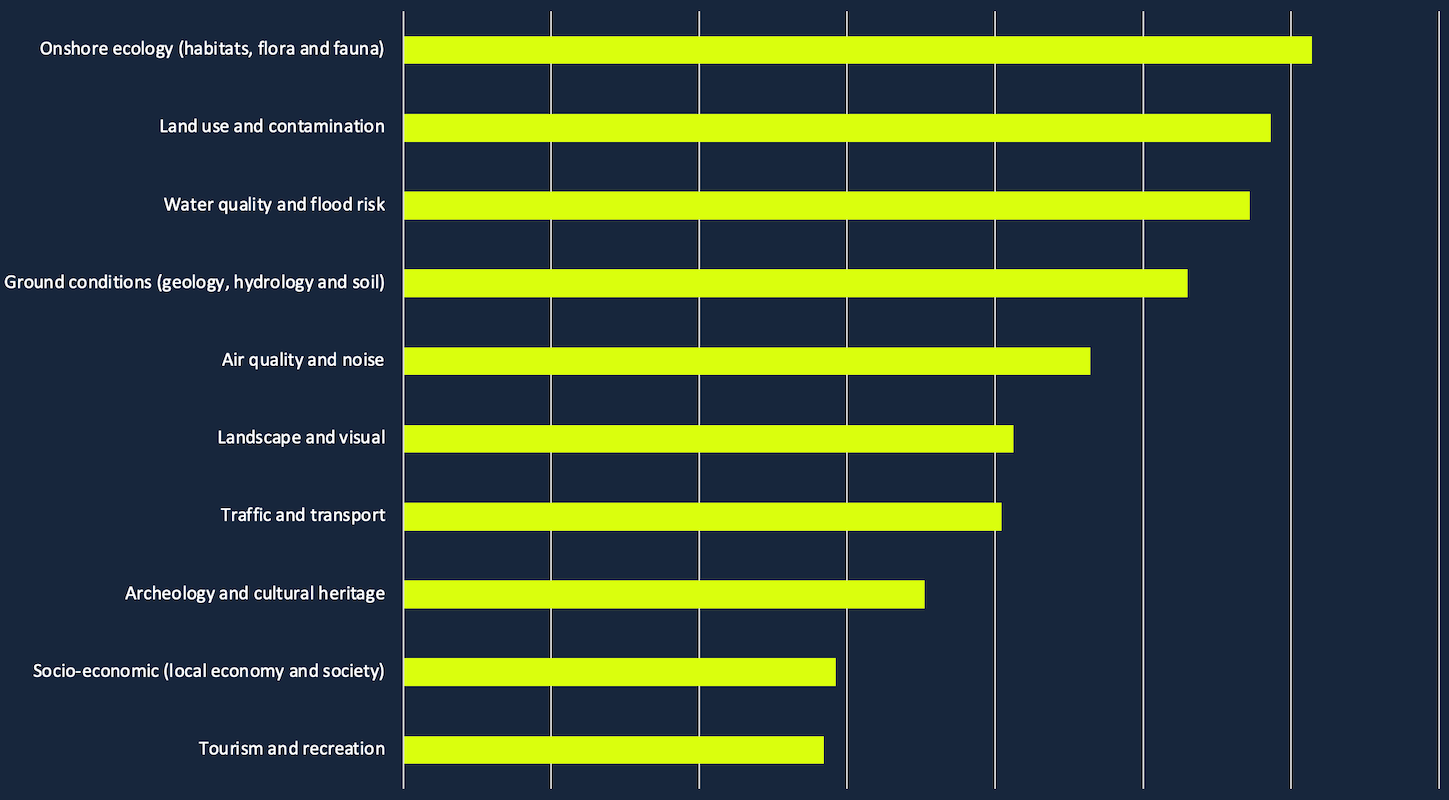The information on this page was correct at the time of publishing (December 2022). The project has since evolved and we would encourage you to read our September update for more information.
The Project: Onshore
Onshore cable route
The route North Fall’s cables take over land and the site of the onshore substation will depend on the location of National Grid’s connection into the national transmission system. We are currently awaiting a decision from National Grid as to the location of the grid connection. When this decision is made (expected early 2022) then North Falls will be able to define a route for the onshore cables and a site for our onshore substation. However as North Essex is considered the likely location for our grid connection, we have started undertaking early surveys across a broad area of search that is known as the 'scoping area'.
Onshore scoping area
To progress the project while awaiting the National Grid decision on our grid connection point, the North Falls team has defined an area in North Essex within which the grid connection point is likely to be located. This is known as the onshore 'scoping area'.
This is the first stage in a long process and the actual footprint of any eventual development will be significantly smaller than this initial broad area of search.
The area was identified by filtering out broad constraints such as population centres and sites of importance for nature conservation, whilst keeping within a certain distance of existing National Grid infrastructure such as the 132kV line between Ardleigh Road and Little Clacton substations.
The subsequent onshore scoping area is approximately 150km2 and located within the Tendring District of Essex. It extends from the coast, between Clacton-on-Sea and Frinton-on-Sea, approximately 20 kilometres inland.
Our ongoing site selection activity will look within this broad onshore scoping area to identify specific locations for each elements of the onshore electrical infrastructure required for North Falls. Future consultations will present the outcome of this work and offer opportunities to input into the proposed locations.
Section complete
Use the form below to update your answers for this section.
Feedback Questions
14. Please order the issues that you consider to be the most important in relation to the onshore impacts of the wind farm. Please number each one 1 - 10, (1 being the most important to you, and 10 being the least important)
While all of these topics are important and will be considered as part of our planning process, it is useful; to see what the local community considers most important and relevant. Onshore ecology was found to be of the most concern, followed by land use and contamination and water quality and flood risk. The graph gives and overview of all the responses.

15. Please include details on why you have chosen these issues
In explaining their rankings of the issues, respondents tended to class them as either short term (traffic, noise) or longer term (local economy, visual impacts). Here is a summary of the rationale for the top ranking topics:
Onshore ecology: Birds and wildlife were highlighted by numerous people as their key concern with high expectations on the project to protect and mitigate any impacts on them.
Land use: This was second in the ranking with varied reasoning including how the substation will look, being sensitive to the surrounding locale, maintaining woodland and ensuring no contamination.
Flood risk: Erosion and flood risk were mentioned under this category with numerous respondents confirming the fact the area has issues with both, hence their concern about any impacts which could contribute and the need to mitigate. Water quality in terms of being able to freely enjoy sea swimming was also included.
Onshore details
While we do not have the grid connection location yet, we do know that the point where our offshore cables will reach land is likely to be between Clacton-on-Sea and Frinton-on-Sea – and that both the onshore cable and substation will be located within the scoping area described above.
We also know that any onshore cables will be buried underground to minimise visual and environmental impact. A temporary working corridor of up to 70m wide will be needed to install the underground cables along with additional areas for temporary construction compounds. While there will be temporary disruption during construction, once the cables have been installed the land will be restored to its former use. Where the cable route crosses features such as roads, watercourses and ecologically sensitive areas, the aim will be to go under them using horizontal directional drilling, as at the landfall, to avoid impacts.

